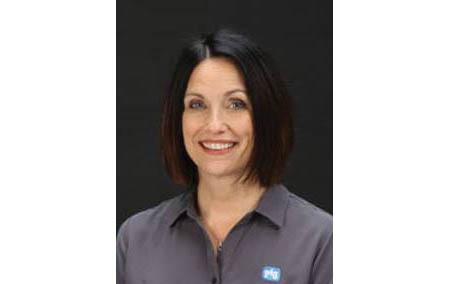— By Mickie Bollinger —
How to get a grip on floor safety.
Slips, trips and falls have unfortunately provided the source material for countless viral videos on social media, but business owners and facility managers know they’re no laughing matter. Whether it’s a team member who’s at risk due to unsafe working conditions, or a customer who encounters slippery floors when they enter your building, there’s great potential for injuries and liability claims if you’re not all in on floor safety.
Slips, Trips and Falls by the Numbers
The latest Liberty Mutual Workplace Safety Index labels same-level falls as the No. 2 cause of disabling workplace injury, costing companies $10.4 billion annually in direct costs. Additionally, the Bureau of Labor Statistics reported there were nearly 300,000 occupational injuries caused by slips, trips and falls in a single year. And when you factor in public foot traffic, the National Floor Safety Institute says slip-and-fall incidents account for over 1 million emergency room visits nationwide every year. These numbers loom large, but a relatively new category of floor safety solutions is making a big difference in managing these risks.
Adhesive-backed mats have been around since the early 2010s when we invented a specialized “grippy” mat, the world’s first of its kind. The concept stuck — literally — and today, adhesive-backed mats can be found on floors everywhere from restaurants and retail to grocery, government, industry, education, healthcare and any other facility with high levels of foot traffic.
Rental Mats are Part of the Problem
Part of the new category’s growing popularity comes from the inherent drawbacks of its predecessor, the rubber-backed mat (a.k.a. rental rugs). Even with high-traction backs, rugs don’t adhere to the floor and depend on weight to keep them in place. Sure, they feel heavy when you lug them around, but put one in a high-traffic area like your entrance and it will crawl out of position as people walk over it. Add wet weather to the equation, and the mat will act like a surfboard, dangerously sliding across the wet, slippery floor. And the more you launder them, the more their edges ripple like bacon, making them unable to lie flat.
Compounding the problem, they don’t fit where you need them. Being limited to standard sizes doesn’t help when you’re trying to cover all the non-standard spaces in your restaurant or building. Putting a handful of 3’ x 5’ rugs in front of a 20’ counter leaves gaps that cause slips and trips. Jamming a big rug into a small or oddly shaped greeter station will bunch up and create trip hazards. Add in the hassle of rental contracts, moving them to clean floors, and the sheer weight of handling them in general, and it’s no surprise that a better solution has evolved.
Time to Roll Out Mats that Stick and Stay Put
Adhesive-backed mats not only lay flat and stick tight, they have a high-traction, absorbent surface that captures dirt and moisture and can last up to 3 months between changeouts. Maintenance crews will be the happiest to hear the mats can be cleaned in place with a vacuum, wet vac or even deep cleaning equipment during routine maintenance. No more lugging heavy rugs out of the way before scrubbing the floors. That kind of versatility goes a long way, as many restaurants have similar problem areas that are prone to wet floors. Here’s a look at some of those trouble spots and how adhesive-backed mats can help.
Trouble Spot: Entrances
Rolls of adhesive-backed mat can be easily cut to size for adequate walk-off coverage in entrances, where rain, snow and slush get tracked inside. According to the International Sanitary Supply Association (ISSA), only 30% of dirt and moisture from shoes is trapped in a standard 3-foot-long entrance mat. To capture 85% of the mess and keep it off of floors, 15 feet of matting, or six steps worth, is recommended. Cut-to-size rolls can be customized to fit any floor plan.
Trouble Spot: Kitchens
In many commercial kitchens, anti-fatigue mats are a necessary component for worker comfort, but they can be complemented with adhesive-backed mats for a more complete floor safety approach. Because adhesive-backed mats have absorbent properties, they can work in tandem underneath anti-fatigue mats or placed as runners in aisles and walkways between stations, to prevent pooling and puddling in wet areas. Look for antimicrobial-infused mats for extra protection where mold and fungus growth are a concern.
Trouble Spot: Buffets
Whether it’s a small soup bar or a full-fledged all-you-can-eat buffet, the combination of customers walking through a line and serving themselves is a recipe for slip-and-fall disaster. Adhesive-backed mats easily eliminate the problem here, making it easy to create high-traction pathways that safely contain drips, spills and splatters. Standard mats and rugs are thicker and more obtrusive, creating a trip to solve a slip, but adhesive-backed mats have a low profile that’s ADA compliant.
Early adhesive-backed mats were somewhat industrial looking, but today’s product lines include carpet-top mats, designer colors, custom-printing options and more. When it comes to clean, safe floors, rubber-backed mats can’t compete with the easy-clean, no-shift, cut-to-size alternative that’s helping thousands of facilities get a grip on floor safety.
— Mickie Bollinger works in new market development with New Pig Corporation, which has been providing cleaner, safer, better ways to work since 1985, when New Pig invented the world’s first contained absorbent: the PIG Original Sock. As the leading international brand for managing leaks, drips and spills, PIG products are used in more than 100 countries on all 7 continents. Visit www.newpig.com.
